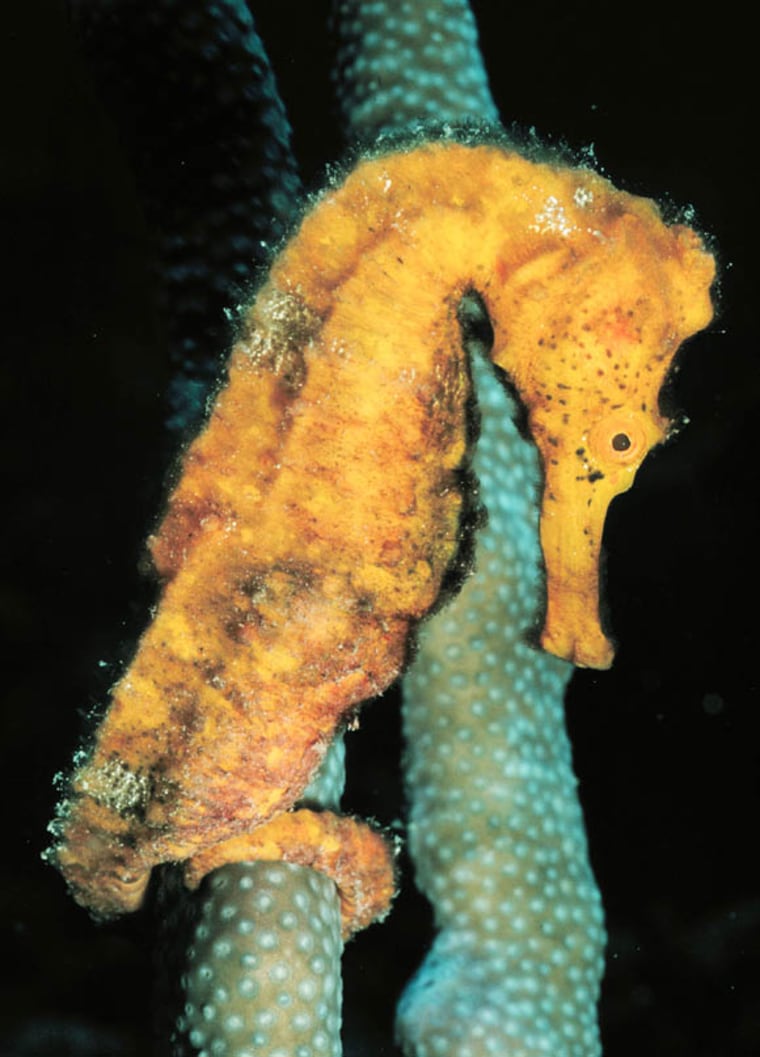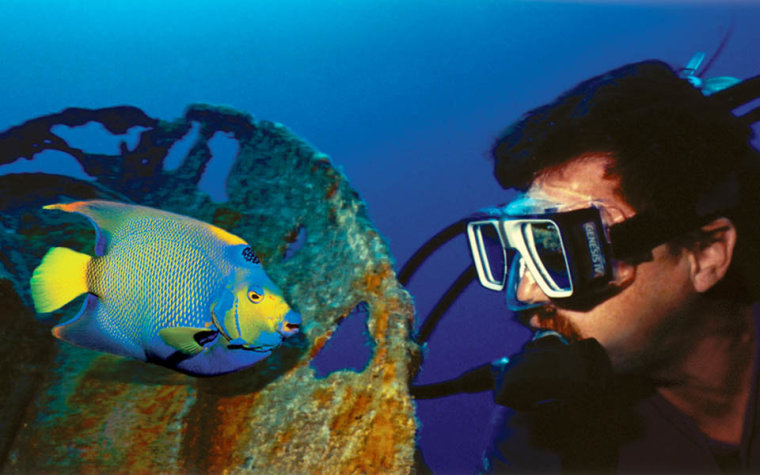It's not like riding a bike. To scuba dive safely, you need professional training. Today, we answer your questions on how to engage in this exciting, yet dangerous sport, responsibly.
Question: Do I need to get certified?
Complete a certification course from either NAUI (National Association of Underwater Instructors, www.naui.org) or PADI (Professional Association of Diving Instructors, www.padi.com), and dive shops around the world will let you do your thing up to 50 feet deep with minimal supervision. Courses take about 30 to 40 hours, with the main focus on safety and understanding the equipment. Lukewarm about all the time and money required? Skip to question #3.
Question: Where should I get certified? At home or on vacation?
Outfitters at popular diving spots teach the entire course in four days, but it’s more pragmatic and affordable to do most of the coursework at a neighborhood pool. You then get your certification card after a few training dives out in the open seas. “I always recommend that the academic and technical work be done before going on vacation,” says Jean-Michel Cousteau, president of the Ocean Futures Society and son of diving legend Jacques Cousteau. “Most ocean diving is so idyllic, and there are so many distractions, that it’s best to be qualified and competent beforehand.” Contact NAUI, PADI, or a local dive shop to find out where courses are offered.

Question: How long will I be in the water?
For certified divers, the morning typically consists of two dives, each using up a tank of compressed air (a two-tank trip, as it’s called). You venture out for a 40-minute descent, take a break, then motor over to a shallower site for a second dip. By lunchtime, most people find they’ve had their limit of saltwater for the day. “Many of our divers want the afternoons free to hike, mountain bike, or kayak,” says Karen Moise, owner of Nature Island Dive, on the Caribbean island of Dominica (www.natureislanddive.com). If you’re not a morning person, afternoon and even night dives—with flashlights—are often available.
Question: What will I see?
It depends on where you go. Australia’s Great Barrier Reef is a cold-water favorite, with chances to see sharks and three-foot-wide clams. Boat wrecks are the big draws in the Bermuda Triangle and Micronesia.The South Pacific is famous for warm waters, spectacular visibility, and colorful corals. Much of the Caribbean has a good mix of wrecks and reefs. There are often dozens of options within each region, so ask around.
Question: Should I rent or buy?
There’s always that one guy huffing and puffing in the airport as he carts heavy tanks and the latest nifty regulators. Just rent the stuff! That said, many divers always travel with their masks. It’s hard to find the perfect fit around the bridge of your nose.
Question: What’s the diver-to-instructor ratio?
Many boats have space for 20 or more divers, but big groups can be overwhelming. With fewer divers, guides are more relaxed—and more likely to show you that moray eel hidden in the crevice or where puffer fish can be found puffing. Aim for a diver-to-instructor ratio of about four to one. If you’re stuck with a large group, ask if it’s OK to leave them behind. “More-experienced divers like independence,” says Buck Butler, editor of Scuba Diving. “They don’t mind a big group if they can go off on their own.”
Question: How far is the boat ride?
Getting to the reef off the Caribbean’s Grand Turk takes five minutes by boat. But at Raiatea, French Polynesia, boat rides can be a rocky 45 minutes, which might make you too woozy to dive. Take non-drowsy seasickness medication if you’re going to be on a boat more than 30 minutes. Or skip the long ride entirely.
Question: How deep will we go?
There are instructors who lead divers to depths of 100 feet, only to be immersed in darkness. The finest dives are usually 40 to 60 feet below the water’s surface, where fish are bountiful and the reef is awash in sunlight. “The only reason to go deeper is to find a wreck,” says Butler.
Question: How much will it cost?
Prices vary. In Cozumel, a two-tank dive with a company called Aqua Safari costs $55 (www.aquasafari.com); a similar dive in in Kauai, with North Shore Divers, is $135 (www.garden-isle.com/nsdivers). But the biggest expenses on dive trips are lodging and transportation, not the actual dives. You often get the best overall price with a package that includes any combination of diving, accommodations, food, and airfare. Two more ways to save: Visit during a destination’s low season, and go where the U.S. dollar is strong.
